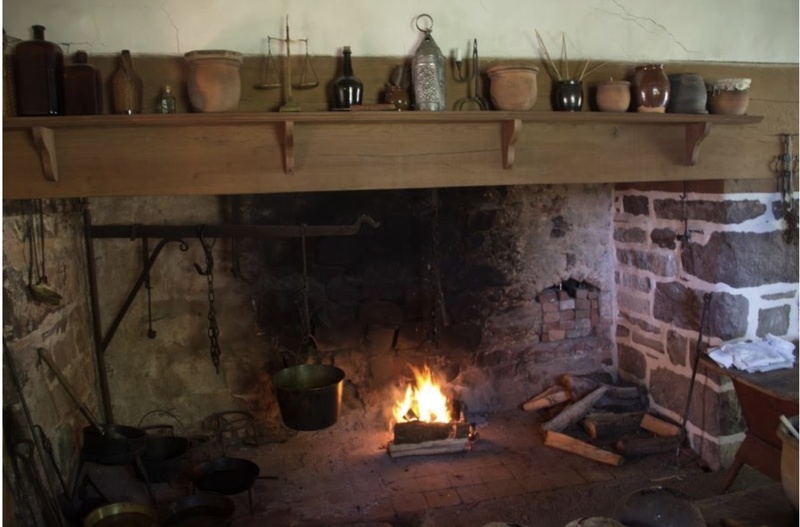Pennsylvania Dutch Kitchen, History
These Pennsylvanian Deutsch communities were largely farmers, with seasonality and self-sufficiency at the crux of their daily life. The kitchen was not only where the meals were cooked, but a working space equal to the land. Here, butter would be churned by hand, vegetables harvested and prepped for drying, salting, smoking, and pickling, as well as dough kneaded in great bulk to supply the large families typically associated with farming communities.
![<a href="/omeka/items/browse?advanced%5B0%5D%5Belement_id%5D=50&advanced%5B0%5D%5Btype%5D=is+exactly&advanced%5B0%5D%5Bterms%5D=Two+Photographs+of+Interior+Kitchens%2C+Clipped+by+Mrs.+Fisher%2C+%5Bca.+1940s-1950s%5D">Two Photographs of Interior Kitchens, Clipped by Mrs. Fisher, [ca. 1940s-1950s]</a> <a href="/omeka/items/browse?advanced%5B0%5D%5Belement_id%5D=50&advanced%5B0%5D%5Btype%5D=is+exactly&advanced%5B0%5D%5Bterms%5D=Two+Photographs+of+Interior+Kitchens%2C+Clipped+by+Mrs.+Fisher%2C+%5Bca.+1940s-1950s%5D">Two Photographs of Interior Kitchens, Clipped by Mrs. Fisher, [ca. 1940s-1950s]</a>](https://omeka.wilkes.edu/omeka/files/fullsize/803db0e5437d150ff50f86fb94004aeb.jpg)
Two Photographs of Interior Kitchens, Clipped by Mrs. Fisher, [ca. 1940s-1950s]. These photographs were found in a Scrapbook, part 2, compiled by Mrs. Fisher, [ca. twentieth century]
Mrs. Fisher researched into the history behind each room that would come to complete the dollhouse, collecting articles and pictures for each movement in her Scrapbook 1 and Scrapbook 2, along with personal mentions of her work in various newspapers.
For the Pennsylvanian Dutch kitchen's research, one Life article explains:
The hearth was the focal point of these spaces, as it is in Mrs. Fisher’s model. Her recreation included a work bench with various pots boiling in the hearth and iron racks on which they suspended their pots over a flame.

![<a href="/omeka/items/browse?advanced%5B0%5D%5Belement_id%5D=50&advanced%5B0%5D%5Btype%5D=is+exactly&advanced%5B0%5D%5Bterms%5D=A+Zoom+of+the+Hearth+in+the+Pennsylvania+Dutch+Kitchen%2C+by+Mrs.+Fisher.+%5Bca.1940s-1950s%5D">A Zoom of the Hearth in the Pennsylvania Dutch Kitchen, by Mrs. Fisher. [ca.1940s-1950s]</a> <a href="/omeka/items/browse?advanced%5B0%5D%5Belement_id%5D=50&advanced%5B0%5D%5Btype%5D=is+exactly&advanced%5B0%5D%5Bterms%5D=A+Zoom+of+the+Hearth+in+the+Pennsylvania+Dutch+Kitchen%2C+by+Mrs.+Fisher.+%5Bca.1940s-1950s%5D">A Zoom of the Hearth in the Pennsylvania Dutch Kitchen, by Mrs. Fisher. [ca.1940s-1950s]</a>](https://omeka.wilkes.edu/omeka/files/fullsize/cbd78af65c7fbb6930b0f58344eec574.jpg)